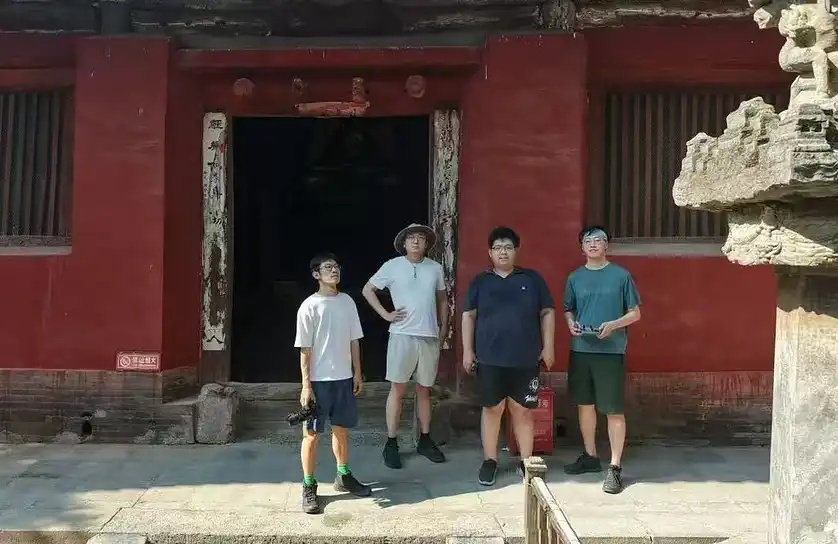Defi Market Identity Guide: Leaders, Whales, Hackers, Robots and Retail Investors
Participants in a DeFi protocol ecosystem
Original source: Vadym Nesterenko
Original compilation: 0x26
The total number of Defi users has recently surged to 1.6 million, and the Defi agreement now has a large number of users and community members active daily on Discord, Telegram and forums. But who are these users?What are their needs and motivations for using and supporting a particular protocol?

Source:Dune Analytics
There are roughly six main groups in the DEFI protocol ecosystem:
Agreement leader (politician);
Liquidators and arbitrageurs;
Developers and builders of protocols;
A provider of working capital;
Demand-side users (e.g., borrowers, traders, premium payers);
Hackers.
For an agreement, it is critical to coordinate and balance the incentives between them to scale up while keeping the system safe. Ignoring any of these factors will eventually lead to systemic risk and a departure from the growth curve.
The main purpose of this article is to break down each user type and describe a simplified empathy graph that will hopefully be useful to product developers.
1. Agreement leader

On the path to ever-increasing decentralization, the founding team should eventually step down as the sole decision maker and become an ownership community. In practice, it means empowering the rights and tools to manage a protocol to maintain decentralization and maintain growth and security.

Source: Source:Aavenomics
The protocol leader is the individual or entity that drives the protocol changes that should help the protocol fix its flaws and make recommendations for scaling up.
Their day job often means making proposals, participating in discussions and debates on forums and Discord, and voicing their opinions via on-chain voting. There is no common definition, but the agreement leader should not be a direct stakeholder (team and investor), and can be common across the agreement, which ensures a fair working method.
The main question is: how to train promoters of the deal, not speculators?
Let's try to understand the motivations of the agreement leaders, briefly analyze the governance incentive model, and define ways to improve.
motivation
It's complicated to decompose and abstract non-financial incentives. Why do you promote protocol X on protocol Y? Economic incentives, by contrast, are more general and can be inherited from one deal to another. Incentives in DEFI usually include:
(1) governance token;
(2) Fee sharing;
(3) the prize.

Tokens are usually distributed through airdrops, liquidity mining, or sales. This approach helps expand the number of holders and energizes the community. However, many users buy and mine tokens for purely speculative purposes, or even to hold the tokens -- to get a free ride. Most governance models offer no economic incentives other than potential token price increases. Moreover, there are only a few agreements in which holders have a stake, which may spur deliberate decision-making.

Source:https://jessewalden.com/progressive-decentralization-a-playbook-for-building-crypto-applications/
Agreement fee allocation is a very practical method to motivate governance participation. In such circumstances, voters should consider not just the pursuit of profit maximisation, but the development of long-term agreements.
First, let's examine the Snapshot governance activities of the leading DEFI protocol:

There is no universally accepted benchmark for participation in good governance. In fact, most decisions are made in forums, and considering that most on-chain proposals are not controversial, the community's on-chain participation is not necessary.
For example, MakerDAO's on-chain participation is quite low, but forum activity is very active in all market cycles.

Now let's look at the motivations for participation in governance and the incentive model:

There are three key components that can lead to effective protocol governance:
· Skin in the game
If the agreement is not governed properly, the governance participants should bear the financial risk of the consequences. The best examples are long-term lockdown (Curve), forfeiture/payout insurance funds (AVE), dilution (MakerDAO, AVE). Note: Fear of loss shouldn't be the only motivator;
· Systematic financial incentives
Revenue is always a good measure to some extent that the system is working correctly. Therefore, accurate governance should be rewarded in the form of agreed profit sharing. Note: It should not be the only motivator, as decisions may ultimately lean toward maximizing short-term profits;
· Agreement Leader Award
Both approaches are fine; they do not recognize active participation in governance and do not separate true contributors from free riders. Valuable activity on forums and Discord should be rewarded to retain and attract active governance contributors.
So what can be done?
A much-needed improvement would be to acknowledge the role of active participation and discourage free-riding. There are already several agreements in place to design incentives for contributors to forums and Discord chats. This process has recently become known as "governance mining". The concept has been introduced by the Maker, Balancer and IndexLoop communities.

Balancer's proposal for "Governance Mining"
The token holders are already willing to pay, so what, isn't that cool?

There are other ways to increase overall governance activities:
· Meta-governance and DAO composability. There are already index and vote aggregators that allow participation in different votes from the same place or participation in other project governance for one currency. Including an index or listing it on a poll aggregator can increase on-chain engagement;
· Allow the use of liquid LP tokens (e.g. Sushiswap) to vote on proposals;
· Gas refund for those who vote online (e.g. UMA);
· Reward "correct" votes (e.g. UMA);
· Launch funding programs for agreement politicians (e.g. Compound, Yearn).
Liquidators and arbitrageurs
These participants are faceless "mystery" market participants whose activities are not obvious, but they play a vital role in the healthy DEFI function. A large part of Defi is built on collateral based protocols (MakerDAO, AVE, Compound) and DEXs (Uniswap, Balancer, Curve, Sushi), without which it cannot operate. In short, when the value of the collateral falls, the liquidator remains solvent, paying off the system's debts, and the arbitrageurs link the price of the asset to the market price.

Source:DeFi Pulse
Motivation is obvious ー ー liquidator can purchase collateral, "discount" arbitrageurs from asset management mechanism or the difference between the centralized trading platform.
These two roles have different meanings, and they require different protocols. A DEX may not care about the arbitrageurs' convenience. Their laxity or inactivity will not harm the system as a whole; only a few traders and liquidity providers will be affected in the short term. Eventually, someone will adjust the price because there is a clear profit opportunity.
In contrast, in a loan agreement, if the liquidator fails, the market price of the collateral can reach the mark price when the liquidation is unprofitable. It would eventually lead to the collapse of the whole system, and there would be outstanding liabilities in the system - meaning that from now on savers would not be able to withdraw their money. To mitigate this risk and deal with this situation, many protocols design system recapitalization mechanisms (token printing, security modules, reserves). This has happened several times, and there is no strong guarantee that it will not happen again. In this case, the agreement is more dependent on the involvement of liquidators and the size of the internal insurance fund, but these measures are insufficient in the event of a sharp market collapse. Solvency is the key to a boom in loan agreements.
Are there any protocols that guarantee the availability of arbitragers and liquidators? Often, it is enough to provide competitive incentives. The challenges inherent in these market players -- competition, Gas optimization, MEV -- are not really a matter of a specific agreement. Moreover, under normal market conditions, competition is fierce.

Scarcity of liquidator activity is a concomitant problem for new agreements with little liquidity. A common practice is to provide basic robots to simplify the startup process of guiding the liquidator's infrastructure. But, often without tweaking or even a complete redesign, such robots are likely to be less competitive. Uma introduced a good liquidation incentiveexample. For example, the clearing of UMA requires a lockup period of several hours, which can be extended if the clearing is challenged. This is why the team needs to provide strong incentives to guide a strong clearing infrastructure.
Some of the liquidation can and should be delegated to other liquidators to reduce the centralization of the core development team.

Source:https://keep3r.network/
Sometimes arbitrage and clearing have a mixed effect on markets, creating unintentional loopholes. We will discuss these situations later in the hacking section.
3. Agreement, Developers and Contributors
Developers are the driving force for Defi and the blockchain market, which is a major source of innovation and new use cases. Today, in the DEFI space, most inventions are created by developers, products are released quickly, and the market is very active. This approach fits well with Silicon Valley's LeanStartup philosophy. You come up with a crazy idea and test it directly with the market.
At DEFI, attracting developers and applications to build or integrate on top of the protocol is important because it enhances network effectiveness and composability, which are key to industry growth. The effective leverage of composability is positively correlated with key indicators such as TVL and volume. The best examples are MakerDao's DAI, Aave, Compound, and Uniswap. Therefore, we can observe a direct and clear correlation between the degree of integration and TVL/ volume.

Source:24h Uniswap Trades %, by Origination, cDAI holders, DAI holders, aDAI holders
With less need for collaboration with other projects due to composability and common functionality, protocols can now be easily integrated with each other, enhancing each other's value underpinning.

The level of composability becomes higher as a result of deeper agreement-to-agreement (or machine-to-machine) collaboration aimed at maximizing liquidity utilization, leverage, and agreement alignment. So that all stakeholders can achieve a win-win-win situation. A good example of this approach isYearn. finace (YFI) ecosystem.
hackers
Unfortunately, decentralization and huge profits also come at a high price. Novelty use cases, lack of security standards, flash loans, and the nature of the blockchain itself make vulnerabilities in the system more complex, resulting in hacks/bugs, and millions of dollars in losses. In 2020, there was an average of one Defi hack every 14.6 days.

Source:https://explore.duneanalytics.com/queries/1439#2469
That's a depressing statistic, but sometimes a hack can have a positive long-term impact on a compromised protocol or even the entire market. A notable example of this is the Black Thursday incident, which may have been a significant factor in further influencing MakerDao's priorities, including accelerating the addition of new collateral and collateral types to maximize the spread and reduction of shortage event risk.
The net result is that this helps increase profits for TVL and MKR token holders and, more importantly, makes DAI more robust.

Source:https://explore.duneanalytics.com/queries/1439#2469
Surely the best thing is to avoid hacking,But how to get hackers to opt for a white hat, rather than hiding what they've stolen, is also important.

At this point, Immunefi has a great solution that allows projects to set bug rewards and recruit white hats to test for bugs in return for a payoff.
5. Liquidity providers (LP) and users with real needs
The DEFI protocol is usually a two-sided market in which the most prominent users are on the rightCredit - Debit, LP- Trader, Premium Payer - Insurance Capital ProviderAnd so on. In theory, it meant solving the chicken-and-egg problem, however, with the introduction of fluid mining, LP's map of empathy became even more apparent. Even without liquidity mining, the average APR in the cryptocurrency market is still very attractive in a real world where deposit rates are negative.
For example, if you design a protocol with a target APY higher than Curve Pools (20% + revenue for stables), then it is not a problem to release and receive significant funding in the near future.
A bad practice is to launch a product at the same time as liquidity mining.Due to product/market matching or simply byWith token mining, it is almost impossible to determine exactly why protocol data is growing.Sooner or later, the APY will be normalized, and if the value pillar doesn't work, the protocol user churn rate will increase, and regaining users will be very difficult. Liquidity mining program leading DEFI protocols, such as Compound, Curve, and Uniswap, were already significant in the market when they launched their tokens. Fluid mining is undoubtedly Defi's most effective growth recipe, but you need something proven to scale.
Mechanism Capital has proposed a scheme to start liquid-miningQuantitative framework.
Looking at TVL's first 5 DEFI agreements, 3 out of 5 projects have no liquid mining. This brings us to this realization againThe importance of organic growth.
The need to add protocols is a bit trickier. Subsidizing this user base doesn't make much sense as it increases borrowing/premium rates and pushes away the actual target audience that is critical to organic growth.
Does the DEFI protocol successfully capture these users?One might say that TVL is increasing, so all is well. However, this is a measure of vanity, and in this case it does not show an accurate picture of the situation at the micro level of the agreement.For example, it is often inaccurately applied to loan agreements because total borrowing reduces TVL. In addition, there is a case where TVL can grow simply because the price of the locked asset rises.
For example, let's look at the daily real growth rate of lending agreements and the total daily net borrowing:


Source:https://explore.duneanalytics.com/dashboard/lending
These are not comprehensive data. But it is safe to say that the improvements in these metrics are the ultimate size of the agreement and the DEFI market.
Final conclusion
The community of a blockchain project is not homogeneous, which requires individual access to each project's user group.Growth strategies and incentives should take into account all concerned parties.Most of the attention in DEFI today is focused on LPs, whose contributions are often over-motivated. Each protocol must itself define the weights of each user group and how to cultivate them.
The last thing I want you to think about is that tokens are an unprecedented, efficient tool for coordination and motivation. But assuming the protocol has no tokens, how do you coordinate the community and what is the growth strategy?
Welcome to join the official BlockBeats community:
Telegram Subscription Group: https://t.me/theblockbeats
Telegram Discussion Group: https://t.me/BlockBeats_App
Official Twitter Account: https://twitter.com/BlockBeatsAsia


 Forum
Forum Finance
Finance
 Specials
Specials
 On-chain Eco
On-chain Eco
 Entry
Entry
 Podcasts
Podcasts
 Activities
Activities
 OPRR
OPRR








